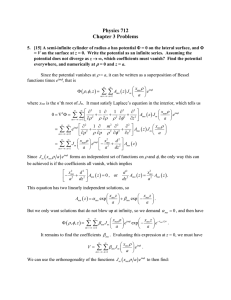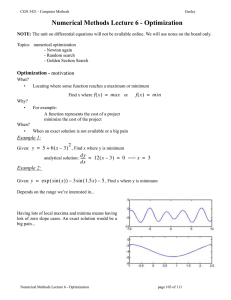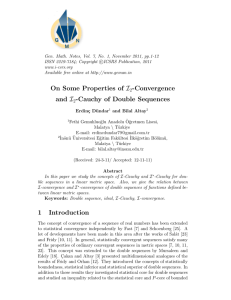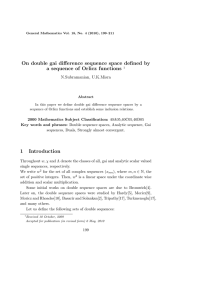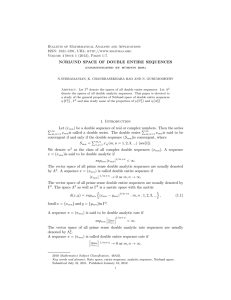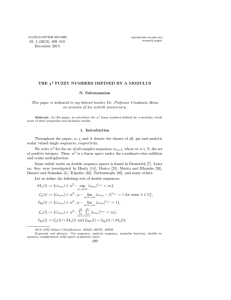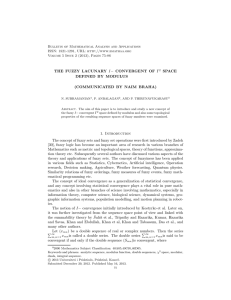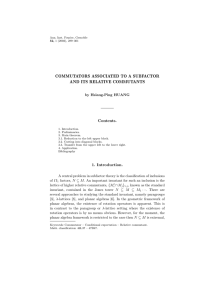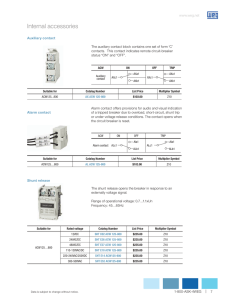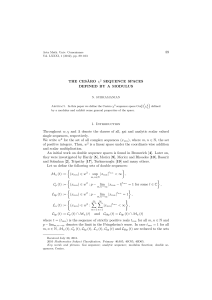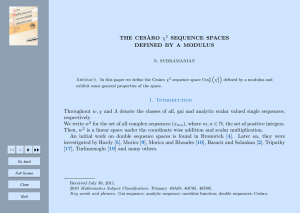1 In Class Questions MATH 151-Fall 02 November 26
advertisement
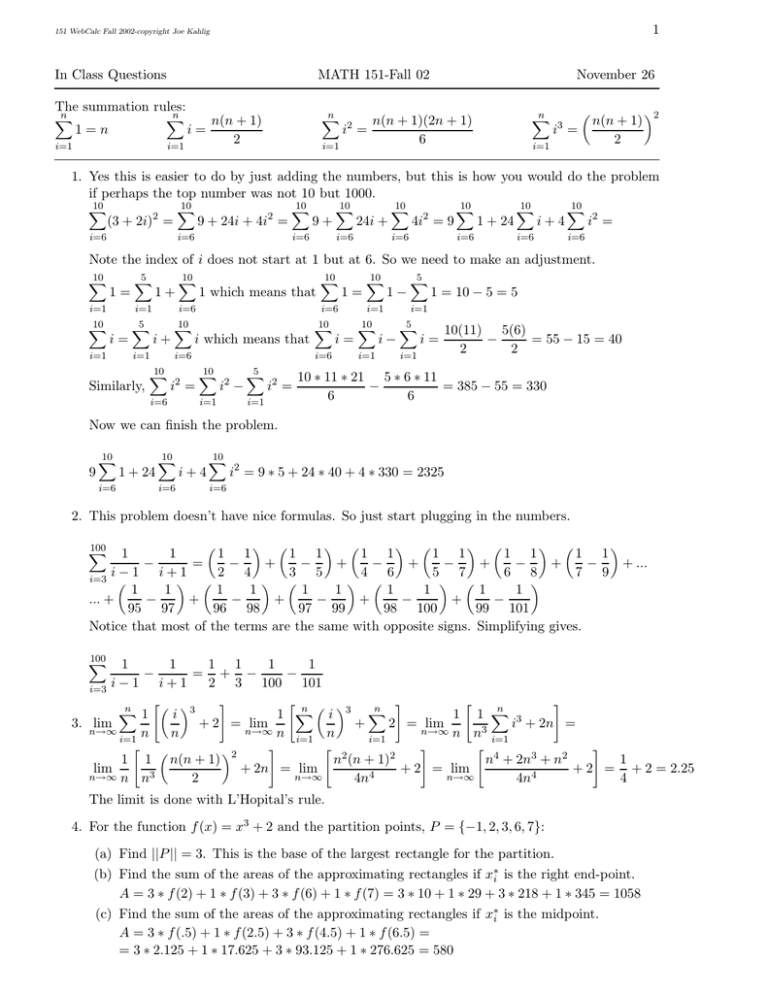
1
151 WebCalc Fall 2002-copyright Joe Kahlig
In Class Questions
MATH 151-Fall 02
The summation rules:
n
X
n
X
1=n
i=1
i=
i=1
n
X
n(n + 1)
2
i2 =
i=1
November 26
n
X
n(n + 1)(2n + 1)
6
i3 =
i=1
n(n + 1)
2
2
1. Yes this is easier to do by just adding the numbers, but this is how you would do the problem
if perhaps the top number was not 10 but 1000.
10
X
10
X
(3 + 2i)2 =
i=6
9 + 24i + 4i2 =
10
X
i=6
9+
i=6
10
X
24i +
i=6
10
X
4i2 = 9
i=6
10
X
1 + 24
i=6
10
X
i+4
i=6
10
X
i2 =
i=6
Note the index of i does not start at 1 but at 6. So we need to make an adjustment.
10
X
1=
i=1
10
X
5
X
1+
i=1
i=
i=1
5
X
1 which means that
i=6
i+
i=1
Similarly,
10
X
10
X
i which means that
i2 =
i=6
1=
i=6
i=6
10
X
10
X
10
X
i=6
10
X
i2 −
i=1
5
X
10
X
1−
i=1
i=
10
X
i=1
5
X
1 = 10 − 5 = 5
i=1
i−
5
X
i=
i=1
10(11) 5(6)
−
= 55 − 15 = 40
2
2
10 ∗ 11 ∗ 21 5 ∗ 6 ∗ 11
−
= 385 − 55 = 330
6
6
i2 =
i=1
Now we can finish the problem.
9
10
X
1 + 24
i=6
10
X
i+4
i=6
10
X
i2 = 9 ∗ 5 + 24 ∗ 40 + 4 ∗ 330 = 2325
i=6
2. This problem doesn’t have nice formulas. So just start plugging in the numbers.
100
X
1
1 1
1 1
1 1
1 1
1 1
1 1
1
+
+
+
+
+
+ ...
−
=
−
−
−
−
−
−
i
−
1
i
+
1
2
4
3
5
4
6
5
7
6
8
7 9
i=3 1
1
1
1
1
1
1
1
1
1
... +
+
+
+
+
−
−
−
−
−
95 97
96 98
97 99
98 100
99 101
Notice that most of the terms are the same with opposite signs. Simplifying gives.
100
X
i=3
1
1
1 1
1
1
−
= + −
−
i−1 i+1
2 3 100 101
3. lim
n→∞
" n
X
1
i 3
i=1
"
n
1 1
lim
n→∞ n n3
n
#
"
#
"
#
n
n 3
n
X
1 X
i
1 1 X
+ 2 = lim
+
2 = lim
i3 + 2n =
n→∞ n
n→∞ n n3
n
i=1
i=1
i=1
n(n + 1)
2
2
#
"
+ 2n = lim
n→∞
#
"
#
n2 (n + 1)2
n4 + 2n3 + n2
1
+
2
=
lim
+ 2 = + 2 = 2.25
n→∞
4n4
4n4
4
The limit is done with L’Hopital’s rule.
4. For the function f (x) = x3 + 2 and the partition points, P = {−1, 2, 3, 6, 7}:
(a) Find ||P || = 3. This is the base of the largest rectangle for the partition.
(b) Find the sum of the areas of the approximating rectangles if x∗i is the right end-point.
A = 3 ∗ f (2) + 1 ∗ f (3) + 3 ∗ f (6) + 1 ∗ f (7) = 3 ∗ 10 + 1 ∗ 29 + 3 ∗ 218 + 1 ∗ 345 = 1058
(c) Find the sum of the areas of the approximating rectangles if x∗i is the midpoint.
A = 3 ∗ f (.5) + 1 ∗ f (2.5) + 3 ∗ f (4.5) + 1 ∗ f (6.5) =
= 3 ∗ 2.125 + 1 ∗ 17.625 + 3 ∗ 93.125 + 1 ∗ 276.625 = 580
2
151 WebCalc Fall 2002-copyright Joe Kahlig
Z5
5. If
Z10
f (x)dx = 6,
1
Z10
g(x)dx = 10, and
1
f (x)dx = 2 compute the following
5
Zb
The one other property of integrals that we need to do these problems is
where k is some constant.
Z10
(a)
1
3f (x) − 2g(x) + 7dx = 3
kdx = k(b − a),
a
Z10
f (x)dx − 2
Z10
Z10
g(x)dx +
7dx =
1
1
1
Z5
Z10
Z10
Z10
= 3 f (x)dx + f (x)dx − 2 g(x)dx + 7dx = 3(6 + 2) − 2 ∗ 10 + 7(10 − 1) = 67
1
Z1
(b)
5
f (x)dx = −
5
Z5
1
f (x)dx = −6
1
1








